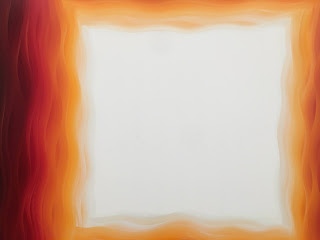The Vagaries of Existence, 2002, in Jonathan Lasker's survey Born Yesterday: Drawing Into Painting, 1987-2020 at Gallery Link.
Detail
Jonathan Lasker, To Love Infinity, 2001
Arriving NY in 1992, Lasker's paintings shocked me to the core, similar to fellow CalArts alum David Salle's that I absorbed in the Count Paza Collection in Los Angeles, circa 1985. A blunt, almost primal use of paint, utter disregard for standards from the past, has over time revealed a modern calligraphy that forms an aesthetic from lack of one. Like Franz Kline before him, Lasker composes in sketchbooks, enlarging the compositions to canvas. Outlining with grease pencil, he hires assistants to painstakingly paint them out, according to Erin Kimmel's fascinating essay in the accompanying catalog, which likens his vocabulary of line with "'pattern-seeing,'"a collapsing of vision and cognition into one another," conceptualized by visual theorist Gyorgy Kepes.
Reasonable Assembly, 2003
Scenic Rememberance, 2007
Bucolic Notation, 1989
Expressive Abstinence, 1989
Around the time I got to know Lasker's work, my husband started a job as paint maker for an artist brand.I shared some samples with a friend who worked for Lasker, convinced the paint would eclipse the Winsor & Newton paint he faithfully used. Though he tried the handmade paint, he preferred his paint consistent.
American Obscurity, 1987
Objects Have Reasons, 2020
Picture With Outstanding Form, 2019
These paintings in some ways remind me of Christopher Wool--variations on the theme of process, the interiorization of city streets, maps, forms, windows, graffiti, dirt. Their enclosed shapes and frontal presence are deeply familiar in daily life.
Karin Davie in It's a Wavy Wavy World at CHART, her first NYC exhibition in fourteen years. The most recent exhibition at Mary Boone stepped beyond canvas with zipper works that mimic the undulations of her paintings, and the first exhibition in which I ever saw her work at Fawbush in Soho, featuring long, vertical paintings with curvy brushstrokes that seemed to protrude from the surface. Her colors then were deep blues and crimsons, with denser texture than the pthalo greens in While My Painting Gently Weeps No. 2, 2019.
In the Metabolic No. 8, 2020 (60 x 60 inches for scale), shows the strategem of this show clearly. Soft gradations from a yellow-tinted white to deep alizarin crimson are woven, stroke by stroke, around the painting's perimeter. A thumb-like shape where she generally stablizes the canvas is removed and disrupts the square with an anthropomorphic echo of touch.
In the Metabolic No. 5, 2019, shows the subtlety of the woven paint in darker tone.
Side Effects No. 3, 2018, 20 x 32 inches, shows the development of this woven stroke.
Known for ambitious, one-shot, wet-into-wet work that in the words of Wikipedia, present "an idiosyncratic take on the modernist stripe," Davie states in the exhibition catalog (available online), that the work in this show include "concepts of 60s edge painting, Minimalism and Process Art [that] have been humorously re-imagined. The iconic architecture of the 'square within a square' motif (i.e. Josef Albers) and suggestion of a metaphysical light at the end of the tunnel is transformed into a Pop-infused personal image that is both optical and visceral."
Cut paper collages in Chart's downstairs space recall the vertical compositions of her earliest work, in the woven motif of the new paintings.
These are incised and cut, similar to the zipper compositions in Davie's 2007 show at Boone.
It's great to see what Davie has been doing, observe the through-lines in the work and especially the deft weaves of juicy, supple skeins of oil. These are calmer paintings, more water-like, relating to minimalist concepts while introducing elements of landscape. Like Lasker, Davie creates a world with a finite series of marks, but in terms of application and surface the RISD and Cal Arts graduates represent different generations. Lasker isolates, examines, and reconstructs the components of painting while Davie re-organizes them in a space that toggles between illusionistic and not. Both deploy a concise vocabulary and play, like a contemporary form of calligraphy, between flat and volumetric space.






























No comments:
Post a Comment